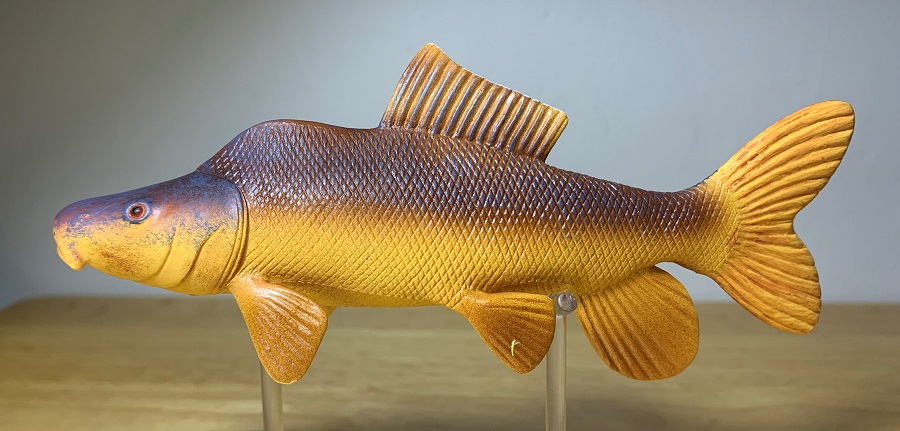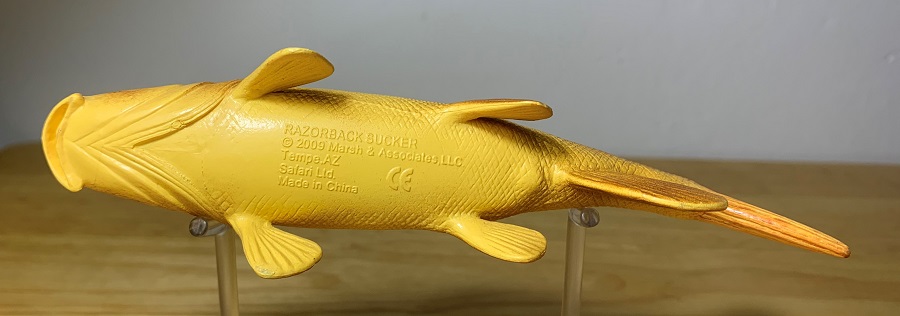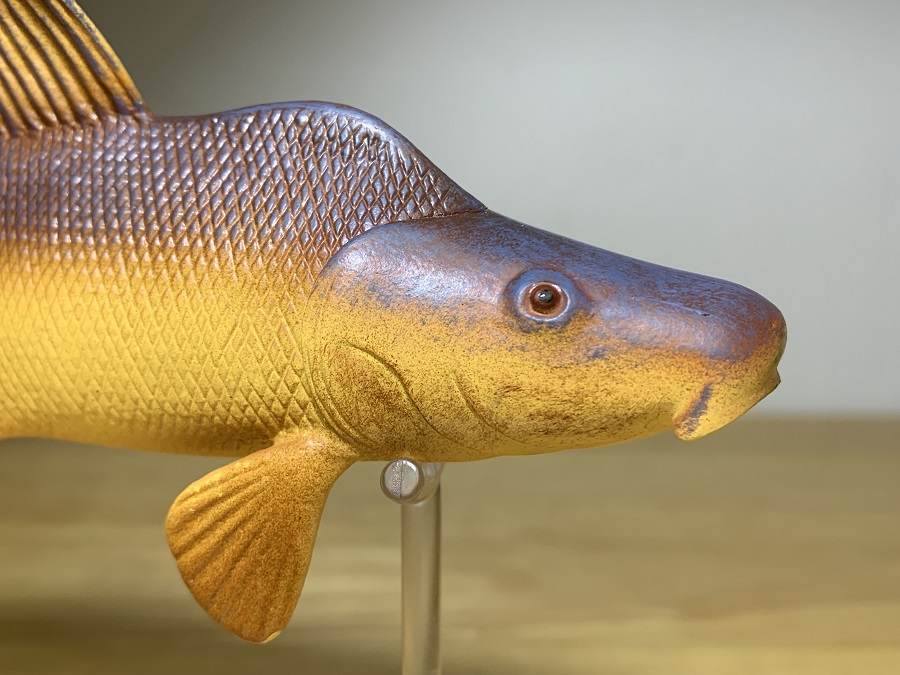It is my great pleasure today to introduce my readers to one of my holy grail collectibles, the razorback sucker (Xyrauchen texanus) by Safari Ltd. This figure is one of a set of 6 produced by Safari Ltd. for the Marsh & Associates Native Fish Lab, all of which represent endangered fishes native to Arizona, USA. Really, all the fish from this set are holy grail items for me. Although many of you are aware of my affinity for sharks I have a love for all fishes, and North American freshwater fishes in particular. I was an aquaculture major in college, write freelance articles for Tropical Fish Hobbyist, am an avid fisherman, and throughout the years have kept a diverse assortment of aquarium fish, including North American species such as darters, sunfish, madtoms, minnows, and killifish. I haven’t had an aquarium running for about 5 years now and miss it greatly. To fill that void in my life I now pursue plastic fishes, and so here we are.


The razorback sucker is a member of the sucker family, Catostomidae. This family of 78 species is almost entirely restricted to North America with two exceptions, the longnose sucker lives in Russia as well as North America and the Asiatic sucker comes from China. The razorback sucker is native to the southwestern United States. Due to climate change, competition with non-natives, habitat loss, and other anthropogenic factors, the razorback sucker is now listed as Critically Endangered and is restricted to the Colorado River north of the Grand Canyon and four reservoirs. Most wild populations are no longer self-sustaining, and their populations are supplemented with hatchery raised stock.


The razorback sucker can reach a length of 3’ (91 cm) and weigh up to 13 lbs. (5.8 kg). The Safari Ltd. razorback measures 6” (15 cm) in total length which puts the toy at 1/6 in scale for a 3’ individual. Razorbacks live over sand, mud, and gravel in backwaters and deep pools adjacent to strong currents. The species matures at 4 years of age and can live over 40 years.

The Safari Ltd. razorback sucker is presented in a static pose with a slight rightward bend in the tail. It sits propped up by its pectoral and pelvic fins. It is also made from a softer, bendier material than you typically see with Safari, it’s a bit sticky too.

Immediately noticeable is the sharp-edged keel running between the head and dorsal fin. This feature is what gives the species its name. The razorback sucker is the only sucker species that has a large keel like this, although the feature is only present on mature fish. On the underside of the long scaleless head is the thick-lipped subterminal mouth which in life is used to feed on algae, detritus, plankton, and small invertebrates. The mouth is well sculpted, as are the gill membranes. Other details, like the fin rays and scales, are nicely executed too.

The figure is painted with a mix of dark brown and gray above with orangish-yellow flanks and belly, and closely matches the breeding colors of an adult male razorback. The dorsal fin rays are brown and gray with yellow coloration between them. The anal and paired fins are deeper orange, and the yellow caudal fin has an orange wash over it. The eyes are dark brown with black pupils. The entirety of the toy is painted with a shiny finish that makes it appear slimy and wet.

The Safari Ltd. razorback sucker is the only plastic figurine you’re ever likely to see of this species. In addition, it is the only toy representative of a North American catostomid. Freshwater fishes are rare in this hobby and those few that do exist shouldn’t be taken for granted or ignored. This and all the Marsh Education figures are essential to any freshwater fish collection. The Marsh Education website lists many of the figures, including the razorback, as being available for $12.00 each. Get them while you can!

Disclaimer: links to Ebay and Amazon on the AnimalToyBlog are affiliate links, so we make a small commission if you use them. Thanks for supporting us!




I’ve mentioned before, but this and four other models* from the series are readily available from the source:
https://www.marsheducation.org/shop/
*The only one not available is the loach minnow, which I reviewed a long while back
I had already mentioned that in the review. 😉 I love it when people comment without reading.
I remember seeing these for sale at the Arizona Museum of Natural History in Mesa, AZ.
What a wonderful review of the fish itself and the fish toy!
Thank you!
Thanks for putting this out there. These fish need all the help they can get.
No problem, it was a pleasure. And I agree!
Carol, I love the razorback sucker toy! I already used it on camera when I was on a call with someone from outside of the United States. Their child was on the call, and I showed them a representation of the type of fish I work with on the Colorado River. These are really wonderful and I need to start collecting more of them.
That is awesome, Nathan!!!